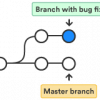 |
Empower Your Agile Team in 4 STEPs New agile teams often start projects after some brief training on the Agile Manifesto and agile frameworks. But without additional coaching, these teams will struggle to deliver continuous value to their clients. Teams should be coached on how to tackle unexpected Situations, use appropriate Tools, conduct agile Events, and adopt appropriate agile Practices—four agile STEPs.
|
|
 |
7 Key Factors for Scaling Agile in Large Organizations Agile adoption has grown from a small number of agile teams within an organization to many agile teams, larger teams, and entire organizations themselves, bringing a new set of challenges and complexities. Regardless of the framework, some important factors play a major role in making large-scale agile adoption successful. Here are seven aspects you should consider when scaling agile across an organization.
|
|
 |
Top 10 AgileConnection Articles of 2018 Agile isn't something you can adopt through tooling; you have to adhere to the agile principles every step of the way. The top articles from 2018 show that people were looking to improve and refine their agile practices, with popular topics including how to enhance your daily standups, retrospectives, and planning. Check out this roundup for ways to enhance your agile operations.
|
|
 |
5 Key Factors to Achieve Agile Testing in DevOps Part of the path to DevOps requires adoption of agile methodologies. What does it mean for testing when you switch from the traditional waterfall model, with a few long release cycles per year, to the agile model, with changes occurring every two weeks? Here are five key factors to achieve the agile software testing necessary in DevOps.
|
|
 |
Agile Estimates versus #NoEstimates: Bridging the Gap Agile teams can easily get puzzled by the heated debate happening between advocates for estimation and those in the #NoEstimates camp. However, by comparing how they solve these problems, we can identify many common practices between the two groups and see they are not truly at odds—they actually complement each other. Let's bridge the gap.
|
|
 |
Agile Development: Focusing on the Health of Your Code In Scrum, the product owner and the ScrumMaster are supposed to drive sustainable development. But there's a third force missing from the formula: the health of the code itself. We often forget that our code is also a member of our team, and we have to be concerned about its health and well-being as much as any other team member. That means using practices to develop good code from the beginning.
|
|
 |
Picking the Right Branch-Merge Strategy A good branch-merge strategy facilitates processes among multiple developers and is the basis for any well-functioning DevOps pipeline that uses continuous integration. Let’s explore branching strategies, merging strategies, and how you can put them together in a way that’s right for your team in order to bring quality features to production faster.
|
|
 |
3 Elusive Qualities of a Great Product Owner When it comes to guiding the development of a product and ensuring you’re building what the user actually needs, a product owner is the most important hire for the team. There’s just one problem: A good product owner can be really hard to find. The characteristics that make a good product owner are elusive, but here are three qualities you should prioritize in your search.
|
|
 |
5 Ways ScrumMasters Can Enhance Daily Standups Daily standup meetings can turn into a perfunctory chore, with everyone simply going through the motions. It’s the ScrumMaster’s job to make sure that doesn’t happen and the meetings remain useful for everyone. With these five ideas, the ScrumMaster can actively help daily scrums be effective and encourage communication, transparency, and efficient delivery of value.
|
|
 |
Eliminate Fake Certainty and Solve the Real Problem Too often, customers have a “fake certainty” about the problems they want to solve. They might not have defined the real problem, but they have frequently defined the solution anyway. The risk is that we might build the wrong thing. When the product owner works with the customers to define the problem, then works with the team to define the solution, everyone can win.
|
|

